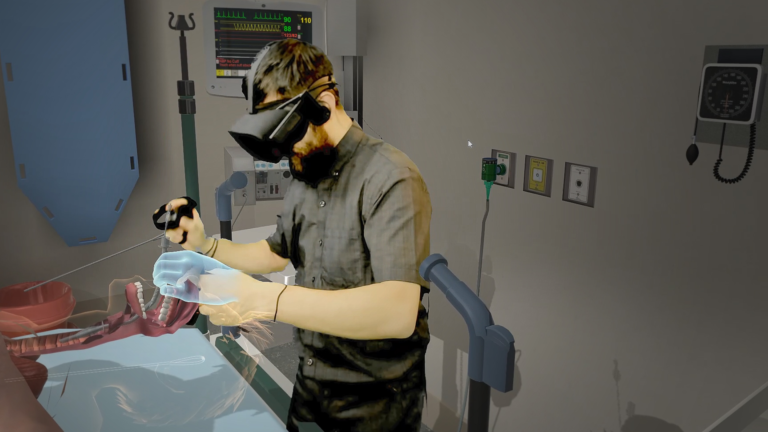
Anatomy has always been considered the foundation of medical science. The pandemic has drastically changed how anatomy is taught. Cadaveric dissection has been the “gold standard” for anatomy training. But, with remote education, new teaching methods using VR have afforded a new medium when there is a lack of access. These technologies offer interactive and engaging alternatives to traditional methods, making them ideal for remote learning. In this article, we explore the innovative tools developed to compensate for the absence of cadaveric dissection, their advantages, and limitations, and the future perspectives of VR medical training.
The Need for Innovative Teaching Methods During COVID-19
Remote education has deprived medical students of the traditional methods of anatomy training. To address this, medical professionals have innovated new teaching methods, including the use of AR and VR technologies. 3D anatomy platforms, video lectures, 3D printing materials, and ultrasound have become popular tools in remote anatomy education. These methods provide visual aids for students to learn and understand human anatomy.
Innovative Tools for VR Medical Training
VR and AR technologies offer a new interactive way of learning and understanding anatomy. Anatomage Tables offer a hands-on, 3D education tool that allows students to dissect a digital human cadaver virtually. VR patients provide a realistic and interactive way to practice communication and empathy, while HoloMentor offers a unique tool for remote anatomy training. These tools allow students to approach the material remotely and have the ability to shift or zoom in on structures of interest.
Advantages and Disadvantages of VR Medical Training
VR and AR have many advantages, including remote accessibility with minimal equipment, the ability to interact with the virtual reality, and the sense of sharing both space and time among participants. However, the tools have limitations, including a small limit of the users allowed to join at one time and the loss of hands-on experience. Additionally, the use of VR and AR may require expensive technological gadgets that are not affordable for every student.
Future Perspectives
VR and AR technologies offer a new way of learning and understanding anatomy. Although limitations in training via VR and AR still exist, these tools can supplement traditional methods. The accuracy of 3D models is constantly being enhanced, and the use of plainer 3D models that enable undergraduate students to perceive and manage them from alternative perspectives might be more advantageous.
COVID-19 has forced medical education to embrace new methods of anatomy training. Traditional methods like cadaveric dissection cannot be replaced at current time. But, VR and AR offer innovative teaching methods for remote education. VR medical training offers a unique and interactive way to learn and understand anatomy. While the limits of the tools are present, they can supplement traditional methods in the future. The “gold standard” in anatomy education should be the combination of traditional and virtual or augmented reality methods. Read the full article here: https://www.cureus.com/articles/125929-virtual-reality-and-augmented-reality-in-anatomy-education-during-covid-19-pandemic?score_article=true#!/ .